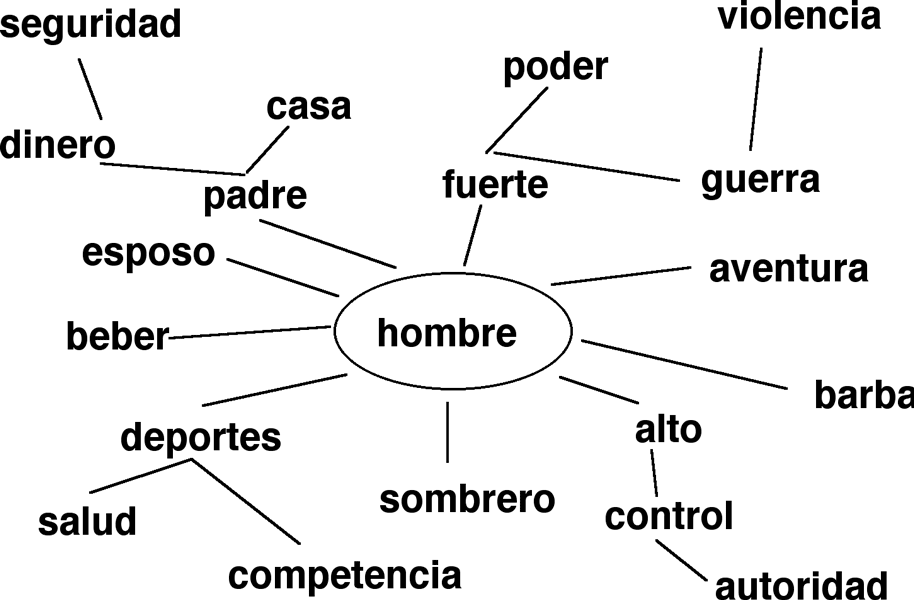
An Information Gap Activity is supposed to mimic one of the real-world purposes of communication: to exchange unknown information. The information needed for the lesson should be divided into two parts, usually separated out onto two handouts: information A and information B. Students are divided into pairs; one student is given the handout with information A and the other student will have the handout with information B. The most common format is to present information in a grid layout in which handouts A and B have complementary information. Students will then ask each other questions and try to complete their handouts by filling in the missing information.
In the sample below, students should find out the information missing from their grid by asking the relevant questions of their partner (e.g., student A asks “What is the lawyer’s name?”)
Handout A
|
Name |
Age |
Profession |
Hometown |
|
Pedro |
|
|
Salamanca |
|
|
35 |
lawyer |
|
|
Maite |
|
student |
|
|
Vanesa |
|
hairdresser |
Cáceres |
Handout B
|
Name |
Age |
Profession |
Hometown |
|
|
22 |
carpenter |
|
|
Jordi |
|
lawyer |
Barcelona |
|
|
19 |
|
Sevilla |
|
Vanesa |
28 |
|
|
A jigsaw is a technique for working with a longer reading text that has obvious logical divisions in the content. Divide the reading into logical sections (these may or may not correspond to paragraphs). Copy each section onto a different colored paper so that all copies of section 1 are pink, for example, all of section 2 are blue, etc. Divide the class into as many groups as there are sections. Give each group ONE section of the reading (i.e. everyone in group 1 gets only the first section). Students must learn the information in their section well enough to present it to someone who has not read their section, and they should be able to answer questions about the content. When all groups are ready (or the time limit you set runs out), have one student from each group come together to form a new group; this new jigsaw group should have one of each of the colored sections represented, each new group containing one person from each of the old groups. In this new group, each student in turn presents the content of the section he/she is an expert on, with the goal of reconstructing the original text. As each student presents, the others should take notes and prepare clarification questions for the presenter.
Password is an excellent technique for developing fluency and circumlocution skills. The basic idea of the game is to have a partner guess what word you are explaining, using only the target language or body language. Some of the variations are as follows:
1. (Fastest and easiest for instructor; minimal preparation time required)
Divide class into 2 groups and have them sit in two rows facing one another, so that each person has a partner directly facing him or her. On the board or big sheets of paper, the instructor writes two different lists of 5-7 words each taken from the vocabulary students have been learning--one list behind each row of students, so that each row is able to see one list and will have a different (unseen) list at its back. Partners take turns getting one another to guess the words from the list they can see. To avoid getting bogged down on a single word, the instructor can set a time limit for each word, or limit the number of explanations and guesses for each word to three. Encourage students to skip around on the lists, since there will be people all around working with the same words. After the first pair has finished with their lists, tell all students in one of the rows to shift 3 places to the right, so that they have a chance to work with a new partner, and give them two new lists to work from.
2. (Most fun for students; they can move around and work with lots of different partners; 5-10 minutes preparation time for instructor)
Prepare slips of paper or index cards with vocabulary items that students have been studying recently. Ideally, you should have eight times as many cards as there are students (for example, for a class of 30, prepare 240 cards; you can include review items as well to increase the number of items covered). Shuffle the cards and give each student eight of them. Put the extras face-down on a table or desk in front of the room. Students form pairs and try to get their partners to guess the words they have, by using definitions, synonyms, antonyms, explanations, etc., in the target language, or using body language, especially at early levels. Students may not say the word on the card or any of its derivatives in their explanations. To avoid getting bogged down on a single word, the instructor can set a time limit for each word, or limit the number of explanations and guesses for each word to three. After students have guessed each other's words, they exchange their stack of cards with one another and look for new partners. This way everyone listens carefully to the definition of the word they are guessing because in a minute they'll have to define that word to someone else. If a student happens to receive the same word twice, they should pick another word from a group of extras on the table, and give the teacher the "used" word so it stays out of circulation.
3. (Good for review throughout the term).
Instructor makes up packets of vocabulary words, one item per card, and stores each set in an envelope. either from current or previous lessons, or both. Students work in pairs, alternating selecting a word from the envelope and trying to get their partners to guess the word they have, giving definitions, synonyms, antonyms, explanations, etc., in the target language, or using body language, especially at early levels. To avoid getting bogged down on a single word, the instructor can set a time limit for each word, or limit the number of explanations and guesses for each word to three.
Semantic Map
A semantic map is a visual representation of information that demonstrates the relationships between ideas, or the chronological order in which ideas occurred in a brainstorming session. The mental process involved is a kind of “free association,” so the resulting map is an interesting window into how the mapmaker thinks and what prejudices he/she may hold on a topic. This activity type is especially useful for review, or for diagnosing what vocabulary a group knows about a topic.
The activity begins with a key word or phrase in a circle (on the blackboard, transparency, or butcher paper). The mapmaker(s) then begin to write down information that occurs to them on the topic, linking the new terms to the original term, or to each other.
Below is a map constructed by a student of Spanish on the topic of “man”.

These three terms refer to a sequence, not really an activity type. The purpose of the sequence is to allow students to focus on the content of their ideas, then work on expressing the ideas in the target language. Often, following the sequence leads to more and more complex language production (instead of the dead silence that often follows a typical “discussion question”); students do not feel so intimidated to speak up since they have worked out their ideas and how to say them.
(1) “Think”: Students should first think about the activity or questions and try to complete as much of it on their own as possible.
(2) “Pair”: Next, students may work in pairs to compare or contrast their answers; they can also help each other to express the desired idea in the target language.
(3) “Share”: Individual students, or partner groups from (2), share their answers with the entire class.
A Venn Diagram is a graphic format for representing information that shows a summary of the similarities and differences between two topics. Draw two intersecting circles similar to the pair shown below. One circle represents, for example, all the information students know about the geography of the Basque Country in Spain. The other circle represents all the information they know about Oregon geography. Any features the two places share can be written in the intersection of the circles. The result shows at a glance what the two places have in common and what features are different.

This is a logistical technique that allows students to practice a similar task repeated times, to develop automated skills or to amass information on limited topics from a large number of classmates. Students face each other in two lines and are paired with the student across from them. In an interview activity, for example, students ask the questions of their partner, and when finished (or on cue from the teacher, who has set a time limit), one line should remain still while the other line shifts one space. The student on the end of the line will move to the opposite end of the line. Everyone will be across from the next person in line, thus having a new partner.
